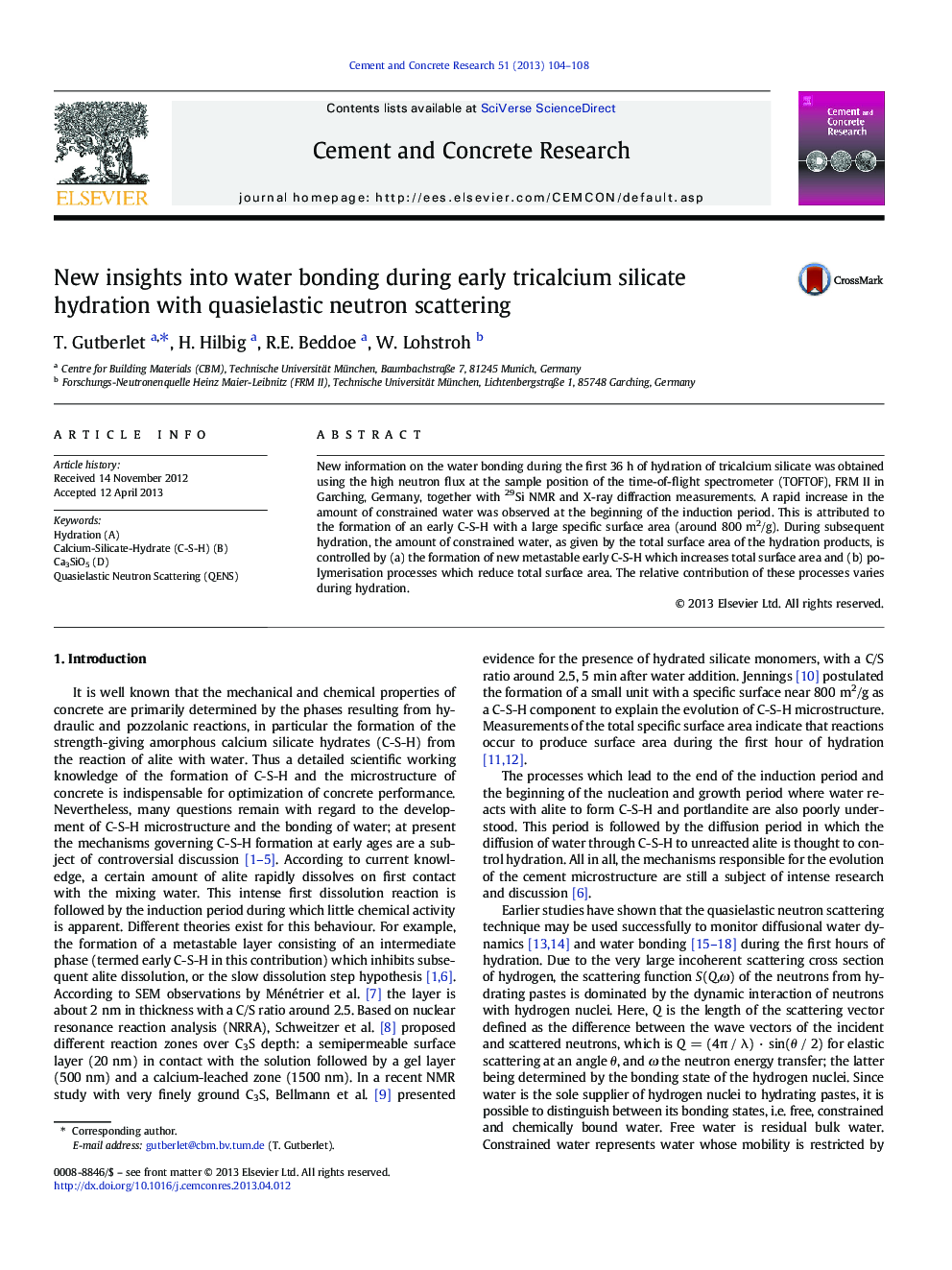| کد مقاله | کد نشریه | سال انتشار | مقاله انگلیسی | نسخه تمام متن |
|---|---|---|---|---|
| 1456363 | 1509770 | 2013 | 5 صفحه PDF | دانلود رایگان |

New information on the water bonding during the first 36 h of hydration of tricalcium silicate was obtained using the high neutron flux at the sample position of the time-of-flight spectrometer (TOFTOF), FRM II in Garching, Germany, together with 29Si NMR and X-ray diffraction measurements. A rapid increase in the amount of constrained water was observed at the beginning of the induction period. This is attributed to the formation of an early C-S-H with a large specific surface area (around 800 m2/g). During subsequent hydration, the amount of constrained water, as given by the total surface area of the hydration products, is controlled by (a) the formation of new metastable early C-S-H which increases total surface area and (b) polymerisation processes which reduce total surface area. The relative contribution of these processes varies during hydration.
Journal: Cement and Concrete Research - Volume 51, September 2013, Pages 104–108